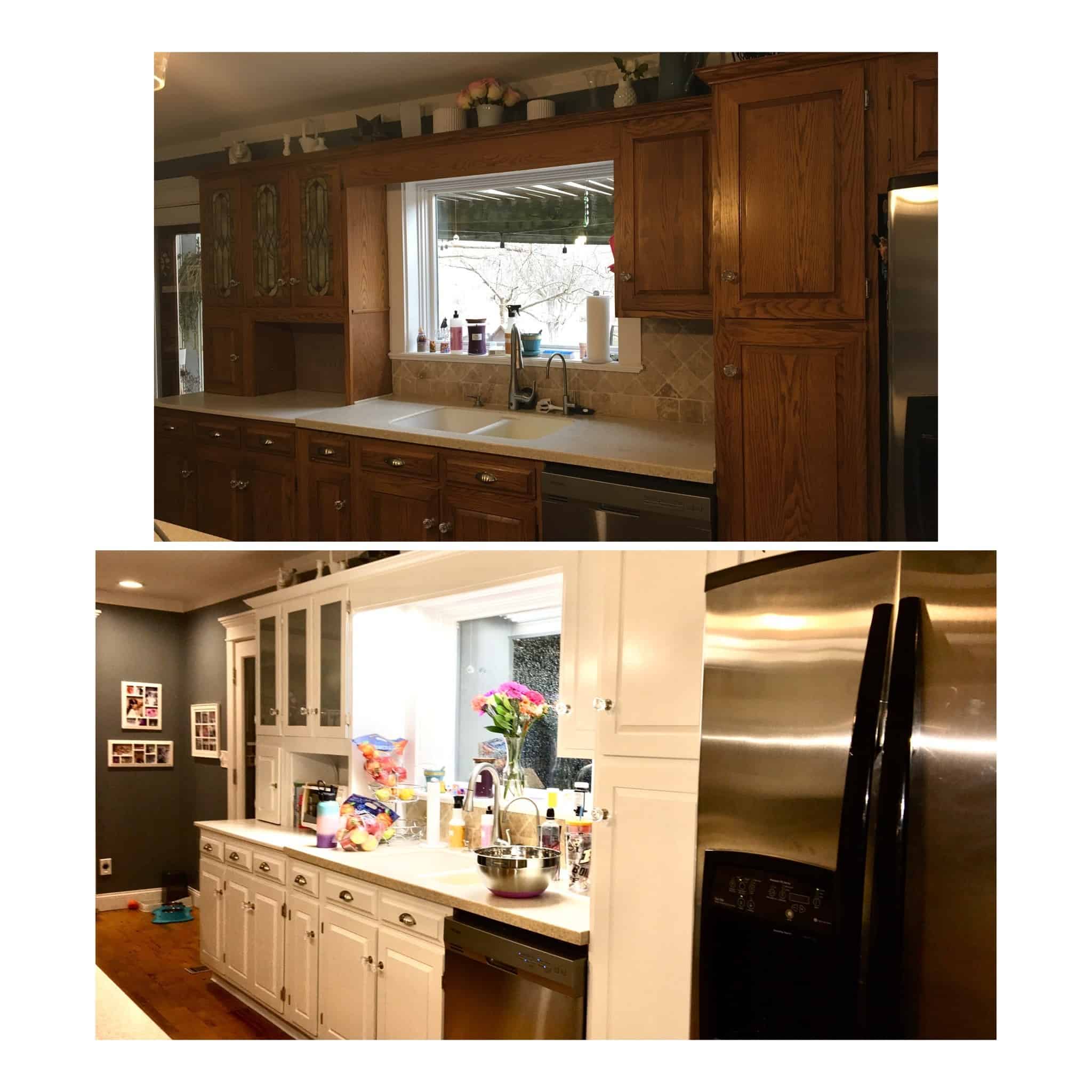Cabinets often cover the bulk of the wall space in a kitchen, so painting them can dramatically alter the entire look of a kitchen. If you like the layout of your kitchen and your cabinets are in good shape, repainting is a cost-effective way to update your kitchen without the expense of new cabinets.
Current trends show that painted cabinetry remains a popular choice for both homeowners and those looking to purchase a home. If you’re thinking of remodeling your kitchen before putting it on the market, consult with an experienced real estate agent first. They can tell you what colors and features are popular with homebuyers in your area and make sure your
renovation pays off when it’s time to sell.
How to Get the Best Cabinet Painting Results
To achieve a high-quality look, it’s important to do the job right. Here are seven tips for painting cabinets like a pro.

1. Choose the Right Paint
To achieve a professional look, choose high-quality paint. It will cost more, but it will be easier to apply, provide a better finish, and last longer. Oil-based paint is moisture- and stain-resistant, making it a popular choice for kitchen cabinets. However, there are many water-based products that are durable and can handle a good scrubbing when needed. Latex is easier to work with and dries more quickly than oil-based paints. Water-based latex paints are also available in
low or no VOC formulas making them safer for both people and pets.
2. Choose a Color that Complements the Space
The color you choose should complement your countertops, floors, and appliances. White is a perennial favorite for kitchen cabinets because it brightens up any room but many designers are showcasing
bolder and brighter color options.
Dark cabinet colors such as deep blues or greens look good in large kitchens. Mid-range colors that are neither too light nor too dark are good choices because they don’t show splatters, sun fading, and wear and tear as quickly as lighter or darker colors.
3. Choose the Right Finish
Kitchen cabinets endure a lot of opening, closing, and handling every day. With frequent exposure to water, humidity, and cooking grease, a durable and washable finish is critical.
The best paint finish for kitchen cabinets is typically semi-gloss or high-gloss. High-gloss finishes are extremely durable and, when professionally applied, have a sleek sophisticated look. However, a high-gloss finish shows fingerprints and dirt more than other finishes and may not be the best choice for households with young children. Semi-gloss reflects light and makes a space feel bigger without being overly shiny. It’s a reliable choice for most kitchen cabinets.
4. Remove the Doors and Hardware and Label Everything
As you remove the hardware, label and number the doors. You can place the hardware in a plastic baggie or tag them with a strip of painter’s tape.
For the doors, mark them with the corresponding number in a place that will be hidden once the doors are reinstalled. If you fail to do this, you’ll find that, when it’s time to reassemble your cabinets, not all doors are interchangeable, and screw holes might differ slightly.
5. Prep the Cabinets
Prepping the
cabinets before painting is an absolute must. Skipping on preparation will result in a poor paint job every time. If the cabinets were previously painted or stained, you’ll need to de-gloss the surface. This allows new paint to adhere properly. Thicker finishes may require chemical strippers but usually, a light sanding is all that is required. If you’re painting wood cabinets with a heavy grain, additional preparation will be needed to achieve a smooth finish.
6. Prime the Surface
Primer helps prepare the surface for the topcoat and is a necessary step. Primer will seal the surface and provide for proper adhesion of paint. Primer increases your paint’s durability which means your cabinets will look good longer. You can even have your primer tinted to match the color of your paint so the paint covers better. In most cases, a single coat of primer is all that is needed.
7. Apply Light Coats
Whether you are spraying, brushing, or using a roller, apply paint in thin, even coats. Applying too much paint at once will lead to runs and drips.
Two thin coats are usually the minimum recommended for painting kitchen cabinets. In most cases, one coat of primer and two coats of paint are sufficient. Some colors might require additional coats to achieve the desired look. Allow plenty of time between coats for the paint to dry thoroughly before applying another coat.
Get the Best Cabinet Painting Results by Hiring a Professional
Cabinet painting is often a surprisingly tedious project best left to professionals who do this type of work every day. Walla Painting specializes in residential painting and our fully insured, bonded, and skilled painters are equipped to handle any size project. We offer
professional cabinet painting services that will change the entire appearance of your kitchen without the need for expensive remodeling.
Walla Painting is a family-owned business, serving Carmel and the surrounding area. Contact us
online or call (317) 620-0695 for a free estimate. We look forward to serving you.

